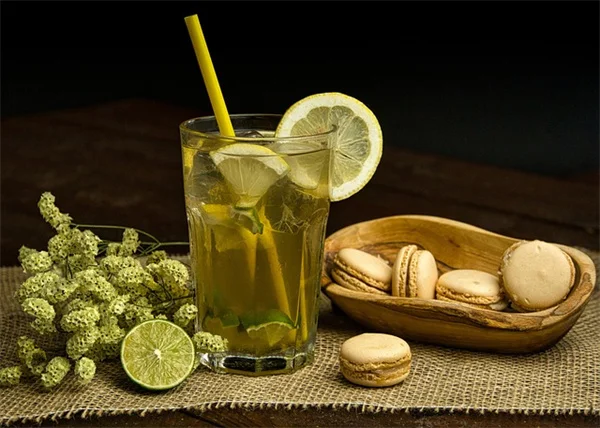What is fibermaxxing and should you try it? The answer is yes - with some smart precautions! Fibermaxxing is TikTok's viral nutrition trend focused on intentionally boosting your fiber intake at every meal. Unlike many questionable diet fads, this one actually has solid science behind it. Here's why it's worth your attention: Getting enough fiber can help with weight loss, improve digestion, balance blood sugar, and even reduce chronic disease risk. But before you start loading up on beans and whole grains, there's some important stuff you should know - especially if you're over 50 or have digestive issues. I've dug into the research and talked with top dietitians to bring you everything you need to fibermaxx safely and effectively. Let's break down what makes this trend different from all the other nutrition crazes out there!
E.g. :Parkinson's Early Signs: How Depression & Anxiety Can Signal Onset Years Before Diagnosis
Advertisement
- 1、What Exactly Is This "Fibermaxxing" Trend Everyone's Talking About?
- 2、The Amazing Benefits of Fibermaxxing
- 3、Who Should Think Twice Before Fibermaxxing?
- 4、How to Fibermaxx Like a Pro
- 5、Making Fibermaxxing Work For You
- 6、The Bottom Line on Fibermaxxing
- 7、The Science Behind Fiber's Superpowers
- 8、Fiber Myths Busted
- 9、Fiber Hacks for Busy People
- 10、Fiber and Your Mental Health
- 11、Fiber for Different Lifestyles
- 12、FAQs
What Exactly Is This "Fibermaxxing" Trend Everyone's Talking About?
The Viral Sensation Taking Over TikTok
Picture this: you're scrolling through TikTok and suddenly your entire feed is filled with people raving about fiber-rich foods like they've discovered the fountain of youth. That's fibermaxxing for you - the latest nutrition craze where people intentionally load up on fiber at every meal.
Here's the deal: Unlike many questionable diet trends, this one actually has science backing it up. Registered dietitian Kara Landau explains, "Fibermaxxing aligns perfectly with what we nutrition professionals have been recommending for years - eating more whole, plant-based foods." The trend focuses on consciously adding fiber to every meal and snack throughout your day.
How Much Fiber Do You Really Need?
Now you might be wondering, "But how much fiber should I actually be eating?" Great question! Let's break it down:
| Age Group | Women (grams/day) | Men (grams/day) |
|---|---|---|
| Adults under 50 | 25 | 38 |
| Adults over 50 | 21 | 30 |
| Children | 14-25 (depending on age) | |
See those numbers? Most Americans barely get half of what they need. That's why this trend is catching on - people are realizing they've been seriously under-fibered their whole lives!
The Amazing Benefits of Fibermaxxing
 Photos provided by pixabay
Photos provided by pixabay
Weight Loss and Beyond
Let me tell you, fiber is like the Swiss Army knife of nutrients. It does everything! First, it helps you feel full longer, which means you naturally eat less without feeling deprived. Second, it feeds those good gut bacteria that influence everything from your mood to your immune system.
But wait, there's more! Regular fiber intake can help:
- Stabilize blood sugar levels (bye-bye afternoon crashes!)
- Lower cholesterol (your heart will thank you)
- Reduce risk of type 2 diabetes and certain cancers
Real People, Real Results
Take Sarah, a 32-year-old teacher who started fibermaxxing. She swapped her usual breakfast pastry for oatmeal with berries and chia seeds. "Within two weeks, I had more energy, stopped craving sweets, and lost 5 pounds without trying," she shared. Stories like this are why the trend is blowing up!
Who Should Think Twice Before Fibermaxxing?
When More Fiber Isn't Better
Now, I know what you're thinking: "If fiber is so great, why isn't everyone doing this?" Well, some people need to be careful. Those with conditions like IBS or IBD might experience bloating or discomfort if they jump in too fast.
Dahlia Marin, a gut health expert, warns: "For people over 50 or with digestive issues, we recommend starting slow and working with a doctor." The key is listening to your body - if your gut starts protesting, ease up!
 Photos provided by pixabay
Photos provided by pixabay
Weight Loss and Beyond
Here's a pro tip: If you're new to high-fiber eating, increase your intake gradually over 2-3 weeks. And drink plenty of water! Fiber acts like a sponge in your gut, so without enough fluids, you might end up more blocked up than before - and nobody wants that.
How to Fibermaxx Like a Pro
Fiber-Rich Foods You'll Actually Enjoy
Forget boring salads - fibermaxxing can be delicious! Try these tasty options:
- Breakfast: Overnight oats with chia seeds and berries
- Lunch: Lentil soup with whole grain bread
- Snacks: Apple slices with almond butter
- Dinner: Stir-fry with brown rice and extra veggies
See? No rabbit food required. The trick is finding high-fiber foods you genuinely like so you'll stick with it.
Reading Labels Like a Nutrition Detective
When shopping for packaged foods, don't just look at the fiber content - check the ingredients too. Kara Landau advises: "Look for products with multiple fiber sources like oats, chicory root, and flaxseeds rather than just one isolated fiber."
Why does this matter? Different fibers feed different gut bacteria. It's like throwing a dinner party - you want to serve a variety that pleases all your microbial guests!
Making Fibermaxxing Work For You
 Photos provided by pixabay
Photos provided by pixabay
Weight Loss and Beyond
You don't need to overhaul your entire diet overnight. Small changes make a big difference:
- Choose whole grain bread instead of white
- Add beans to your tacos or salads
- Snack on popcorn instead of chips
- Leave the skin on your potatoes
Before you know it, you'll be hitting your daily fiber goals without even trying!
What About Fiber Supplements?
Here's a common question: "Can't I just take a fiber pill instead of eating all these plants?" Technically yes, but you'd be missing out. Whole foods provide vitamins, minerals, and antioxidants that supplements can't match.
Think of it this way: Taking a fiber supplement is like watching a movie trailer instead of the whole film. You get part of the experience, but not the full story!
The Bottom Line on Fibermaxxing
Why This Trend Has Staying Power
Unlike many flash-in-the-pan diet fads, fibermaxxing has serious science behind it. Study after study shows the benefits of adequate fiber intake for long-term health. And the best part? You don't need expensive supplements or weird ingredients - just good old-fashioned whole foods.
Your Personal Fiber Journey
Remember, everyone's different. Start where you are, go at your own pace, and pay attention to how your body responds. With a little patience and creativity, you can make fibermaxxing a sustainable part of your healthy lifestyle. Now go enjoy that avocado toast - your gut bacteria are waiting!
The Science Behind Fiber's Superpowers
How Fiber Works Its Magic in Your Gut
Ever wonder why fiber makes you feel so good? It's all about what happens in your digestive system. When you eat fiber, it moves through your stomach and small intestine mostly undigested - that's why we call it "roughage." But here's the cool part: once it hits your large intestine, your gut bacteria throw a party!
These microscopic guests ferment the fiber, creating short-chain fatty acids that do amazing things for your health. They reduce inflammation, strengthen your gut lining, and even send signals to your brain that help regulate appetite. It's like having tiny nutritionists working overtime inside you!
The Fiber-Blood Sugar Connection
Here's something most people don't realize - fiber is nature's blood sugar regulator. When you eat carbs with fiber (think whole fruit instead of juice), the fiber forms a gel that slows down digestion. This means sugar enters your bloodstream gradually, preventing those energy crashes that make you reach for another snack.
Want proof? Check out this simple comparison:
| Food | Fiber Content | Blood Sugar Impact |
|---|---|---|
| White bread | 1g per slice | Rapid spike |
| Whole grain bread | 3g per slice | Gentler rise |
| Apple with skin | 4g per medium | Slow, steady release |
Fiber Myths Busted
"All Fiber is Created Equal" - Wrong!
Here's a shocker - not all fiber works the same way in your body. There are actually two main types: soluble and insoluble. Soluble fiber dissolves in water (think oats and beans) and helps lower cholesterol. Insoluble fiber (found in whole wheat and veggies) keeps things moving through your digestive tract.
The smart approach? Get both types! Your gut microbiome thrives on variety, just like you enjoy different cuisines. Mixing up your fiber sources ensures all your gut bacteria get fed properly.
"Fiber Means Eating Like a Rabbit" - Not True!
Who says high-fiber foods have to be boring? Some of the tastiest foods pack the most fiber. Dark chocolate (70% cocoa or higher) contains about 3g fiber per ounce. Even your favorite guacamole counts - avocados deliver about 10g fiber each!
Here's my favorite fiber-rich dessert: chocolate avocado mousse made with cocoa powder, ripe avocado, and a touch of honey. You get creamy deliciousness plus a fiber boost that would make any nutritionist proud.
Fiber Hacks for Busy People
Fast Food That Doesn't Fail You
Think you can't get fiber when eating out? Think again! Next time you're at a sandwich shop, ask for whole grain bread and load up on veggie toppings. At Mexican spots, choose bean burritos over meat-heavy options. Even burger joints often have side salad options - just skip the croutons!
Pro tip: Keep emergency fiber snacks in your bag or desk drawer. My go-tos are single-serve packs of almonds, dried figs (nature's candy!), or high-fiber granola bars. When hunger strikes, you'll be ready with gut-friendly options.
Meal Prep Made Simple
Want to make fibermaxxing effortless? Spend one hour on Sundays prepping these staples:
- A big pot of lentil or bean soup
- Cooked quinoa or brown rice
- Chopped veggies for quick stir-fries
- Overnight oats jars for breakfast
Having these ready means you can throw together high-fiber meals in minutes all week long. Your future self will thank you when you're not reaching for that frozen pizza after a long day!
Fiber and Your Mental Health
The Gut-Brain Axis Explained
Here's something fascinating - your gut and brain are in constant conversation via the vagus nerve. When your gut bacteria are happy (thanks to all that fiber you're eating), they send positive signals to your brain. Studies show people who eat more fiber report lower levels of anxiety and depression.
Think about that next time you're feeling stressed. Instead of reaching for comfort food that might make you feel worse later, try a fiber-rich snack like yogurt with berries and flaxseeds. Your gut microbes will reward you with feel-good chemicals!
Sleep Better with Fiber
Can what you eat during the day affect how you sleep at night? Absolutely! The same gut bacteria that help regulate your mood also influence your sleep cycles. Fiber helps maintain stable blood sugar overnight, preventing those 3am wake-ups when your body craves quick energy.
Try having a small, fiber-rich snack about an hour before bed - maybe some cottage cheese with sliced pear or a handful of walnuts. The tryptophan in these foods combines with fiber to help you drift off more easily.
Fiber for Different Lifestyles
Fibermaxxing for Athletes
If you're active, you might worry fiber will slow you down. Actually, the opposite is true! Fiber helps regulate energy release during workouts. The key is timing - eat high-fiber meals 2-3 hours before exercise, then stick to easily digestible carbs closer to workout time.
Post-workout, fiber helps with recovery by reducing inflammation. Try a smoothie with banana, spinach, Greek yogurt and ground flaxseeds. You'll replenish glycogen stores while feeding those hardworking muscles and gut bacteria!
Family-Friendly Fiber Ideas
Getting kids to eat fiber can be tricky, but it's worth the effort. Start with familiar foods they already like - whole grain pancakes with berries, homemade popcorn for movie night, or "ants on a log" (celery with peanut butter and raisins).
Make it fun by letting them create their own fiber-packed trail mixes with whole grain cereals, dried fruit, and nuts (if no allergies). The more they're involved in preparing these foods, the more likely they are to eat them!
E.g. :Should You Try Fibermaxxing? Why Doctors And Nutrition Pros Say ...
FAQs
Q: What exactly is fibermaxxing?
A: Fibermaxxing is all about consciously increasing your fiber intake throughout the day. Unlike temporary diets, it's a sustainable approach to eating more whole, plant-based foods. We're talking about adding fiber-rich options like fruits, veggies, whole grains, and legumes to every meal and snack. The goal? To consistently hit your daily fiber targets (25-38g for most adults) rather than just getting occasional fiber boosts. What makes this trend special is its focus on variety - different fiber sources feed different gut bacteria, creating a healthier microbiome overall.
Q: How can fibermaxxing help with weight loss?
A: Here's why fiber is a weight loss powerhouse: First, high-fiber foods make you feel full longer, so you naturally eat less without feeling deprived. Second, they tend to be lower in calories while providing more volume. Third, fiber helps regulate blood sugar, reducing those energy crashes that lead to unhealthy snacking. We've seen clients lose 5-10 pounds just by making simple fiber swaps like choosing whole grain bread instead of white or adding veggies to every meal. The best part? You're nourishing your body while losing weight!
Q: Are there risks to fibermaxxing?
A: While most people benefit from more fiber, some should be cautious. If you have IBS, IBD, or other digestive conditions, suddenly increasing fiber might cause bloating or discomfort. Older adults and those with certain medical conditions may need to adjust their approach too. The key is to start slow - add just 5g more fiber daily for a week, then gradually increase. Always drink plenty of water (fiber needs fluid to work properly!) and listen to your body. If you experience persistent discomfort, consult your doctor before continuing.
Q: What are the best high-fiber foods for beginners?
A: We recommend starting with these gut-friendly options that are easy to digest: oats, sweet potatoes, bananas, peeled apples, well-cooked carrots, and white rice with beans. As your body adjusts, you can add more challenging fibers like raw veggies, whole grains, and seeds. Our pro tip? Soak beans overnight and cook them thoroughly to reduce gas-producing compounds. Remember, diversity matters just as much as quantity when it comes to fibermaxxing benefits!
Q: Can I just take fiber supplements instead?
A: While supplements can help bridge gaps, they shouldn't replace whole food sources. Here's why: Real foods provide a complex mix of fibers that feed different gut bacteria, plus essential vitamins and antioxidants. Supplements typically offer just one type of fiber. Think of it like this - eating an apple gives you fiber plus vitamin C and polyphenols, while a supplement gives you isolated fiber. We suggest using supplements occasionally if needed, but making whole foods your primary fiber source for maximum health benefits.

